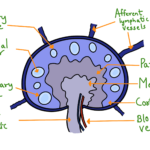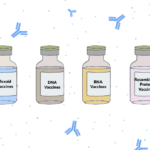Each organism on this Earth has a wide range of proteins that drive the various biological processes and biochemical reactions occurring within the cell. These reactions and processes sometimes require the interaction between two proteins; these interactions drive the phenomenon ahead. From a life scientist’s point of view of a life scientist, it is extremely important to study these protein-protein interactions to understand life better. A lot of efforts have been made to develop techniques to understand and detect protein-protein interactions. The result is that now we have a wide range of techniques that can detect these interactions between proteins effectively and efficiently. In this article, we will focus on few such techniques routinely used to detect protein-protein interactions.
Yeast two-hybrid assay:
The technique is developed by Fields and Song in 1989. The technique is generally used to detect the biophysical interactions between two proteins. In this assay, a transcription factor in yeast is used, which contains two distinct domains, DNA binding domain (BD) and Activation domain (AD). Typically, Gal4 is the transcription factor that is used. The technique depends upon the in vivo functional reconstitution of the transcription factor and its ability to transcribe the reporter gene once reconstituted. The two proteins suspected of interactions are bound to two parts, the transcription factor (BD and AD), separately. The resultant protein complex after fusion of protein with the DNA binding domain (DB) is known as the bait (DB-x), and the protein complex as a result of a fusion between Activating domain is known as pray (AD-y). Suppose there is an interaction between suspected proteins x and y. In that case, the interaction results in the in vivo reconstitution of the bait and pray complexes to form a functional transcription factor that will transcribe the reporter gene.
In some cases, the reporter gene is a gene that allows yeasts to synthesize some essential amino acids; in such cases, the growth of yeast on a selection media is an indication of interaction between the two suspected proteins. In the Yeast Two-Hybrid assay, two different DB-x complex and AD-y complex constructs are immobilized in yeast cells. There are some limitations to this technique biggest being that the mammalian protein interactions are challenging to detect in the Y2H system because of the difference in the post-translational modifications. The technique reportedly has a higher false-positive rate.

Co-immunoprecipitation:
Co-immunoprecipitation is a technique that depends on the immunological phenomenon known as immunoprecipitation. In immunoprecipitation, antibodies specific for a protein are allowed to bind to protein and form complexes; these complexes are later on precipitated and detected using various techniques available such as SDS-PAGE. In the Co-immunoprecipitation assay, the protein of interest is immobilized on a solid support via a protein-specific antibody. Proteins from the cell lysate are then allowed to interact with the protein of interest, and the complexes are immunoprecipitated using a resin. The proteins which are bound non-specifically to the protein of interest are removed by series of washes. The complexes are then detected via gel electrophoresis and mass spectroscopy.

Bimolecular Fluorescence Complementation:
Bimolecular Fluorescence complementation is a relatively advanced technique to study protein interactions. In this technique, the two proteins postulated of interacting are fused with an unfolded complementary polypeptide fragment of a fluorescent protein. Both the bait protein and the prey protein are fused with fluorescent polypeptides so that the biophysical interaction between bait and pray protein will result in close proximity between the two complementary fragments, allowing the fluorescent protein to reform in vivo. Once the fluorescent protein is reformed in vivo, the signal for interaction between the two proteins can be detected in the form of fluorescence via a fluorescent microscope. The cells in which the assay needs to be performed express the fused proteins via plasmid vectors. Hence, creating proper plasmid vectors which are able to form fusion protein containing fluorescent protein fragments without actually disturbing the native function of a protein. The advantage of this technique is that the fluorescent signal is directly proportional to the interaction of proteins.

Tandem Affinity Purification:
Tandem Affinity Purification is a technique that extracts only the protein of interest with its interacting protein from a cell instead of all the proteins. As the name suggests, the technique uses affinity purification in tandem. In the process, the protein of interest is tagged with a TAP tag. The Tap tag consists of Calmodulin binding peptide, TEV protease site for cleavage and a protein A domain that binds to IgG. In the first protein purification step, beads coated with immunoglobulin G are added to the cell lysate. These beads bind to the outermost protein A domain. The beads, along with the protein of interest, are separated from cell lysate via centrifugation. In the next step, the interaction between the Protein A domain and IgG beads is broken via the addition of TEV protease, which cleaves at the TEV protease site and releases protein of interest from IgG beads. The following beads added are calmodulin beads. The protein of interest now interacts with calmodulin beads via the calmodulin-binding domain of the TAP tag. The protein of interest is further purified using centrifugation. The interaction between beads and proteins is broken by the addition of EGTA or egzatic acid, leaving behind the native eluate containing only the protein of interest, its bound protein partners.

Phage Display:
This technique uses a phage to detect the interaction between proteins, protein-nucleic acids. A gene coding for a protein of interest is encoded along a coat protein gene of a bacteriophage. To check the interaction between protein-protein or protein-nucleic acid, the interacting protein or nucleic acids are immobilized on microtiter plates and the phage displaying protein of interest is screened for interaction by incubating them in a microtiter plate. Libraries of proteins and peptides along with nucleic acid sequences can be screened by this method to detect interactions. M13, fd filamentous phage, T4, T7 and lambda are the most common phage used for these purposes.




